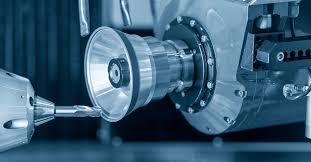CNC machining has revolutionized modern manufacturing by providing precision, efficiency, and scalability. Whether you're developing prototypes or producing high-volume parts, CNC machining offers unmatched quality. But with these advantages come costs—and understanding the cost drivers in CNC machining can help you plan your projects more effectively.
In this guide, we’ll break down the key factors that influence CNC machining costs and how you can optimize your budget without compromising on quality.
1. What Is CNC Machining?
CNC (Computer Numerical Control) machining is a manufacturing process where pre-programmed software controls the movement of tools and machinery. It includes operations like milling, drilling, and turning to shape materials into precise components.
Because of its ability to deliver high accuracy and repeatability, CNC machining is widely used in industries such as aerospace, automotive, medical, and consumer electronics.
2. Factors That Influence CNC Machining Costs
Several variables can significantly affect the cost of CNC machining. Here’s a detailed look at the most impactful factors:
a. Material Selection
The type of material being machined plays a critical role in overall costs. Common materials include:
-
Aluminum – Lightweight and easy to machine, making it cost-effective.
-
Steel – Strong and durable but harder to machine, increasing tool wear and time.
-
Plastics – Easy to cut but may require special handling due to thermal properties.
Exotic materials like titanium or Inconel add complexity and raise the overall machining time and cost.
b. Part Complexity
Intricate designs require more tool changes, machine movements, and time. Complex parts with tight tolerances or undercuts need specialized tooling and often multi-axis machining, which increases the price.
c. Quantity of Parts
Economies of scale apply in CNC machining. Producing a single prototype can be expensive, but the unit cost decreases as volume increases, since setup and programming are one-time costs.
d. Machining Time
The longer it takes to machine a part, the higher the cost. Machining time depends on:
-
Material hardness
-
Tool path efficiency
-
Type of machining (milling, turning, etc.)
Using services like cnc turning services can help optimize time and reduce cost for symmetrical parts like shafts and bushings.
e. Tolerance Requirements
Tighter tolerances demand slower feed rates, specialized tools, and quality inspections. These add time and cost, so it's essential to balance tolerances with actual functional needs.
f. Post-Processing
Additional treatments like anodizing, powder coating, heat treatment, or polishing contribute to the total cost. While they may enhance part performance, they should be factored into the budgeting process.
3. Cost Breakdown: What You’re Actually Paying For
Here’s a general breakdown of how CNC machining costs are typically distributed:
| Cost Component | % of Total Cost |
|---|---|
| Material Costs | 30–50% |
| Machining Labor & Time | 25–40% |
| Setup & Programming | 10–20% |
| Post-Processing | 5–15% |
| Quality Inspection | 2–5% |
Note: These values vary depending on industry, complexity, and order volume.
4. How CNC Turning Services Affect Cost Efficiency
CNC turning is a specific type of CNC machining ideal for cylindrical parts. Compared to milling, turning can be more efficient and cost-effective when producing rotational components.
For instance, if your parts are symmetric along a central axis (like rods, bolts, or bushings), utilizing cnc turning services reduces both material waste and machining time. This translates directly to lower overall costs without sacrificing precision.
Turning also allows for quicker setup and tool changes, especially for batch production.
5. Tips to Reduce CNC Machining Costs
To make the most of your CNC budget, consider the following best practices:
a. Optimize Your Design
-
Eliminate unnecessary features
-
Increase tolerances where possible
-
Avoid deep cavities or undercuts
b. Choose the Right Materials
Use materials that are easier and faster to machine unless specific strength or performance characteristics are required.
c. Consolidate Parts
Combining multiple components into a single machined part can save time and reduce the need for assemblies.
d. Order in Bulk
The more units you order, the lower the per-unit cost. Consider grouping similar parts for production.
e. Consult with Experts
Reputable providers like CNC Machining Services can advise on the most efficient manufacturing approach, saving you time and money.
6. CNC Machining vs. Other Manufacturing Methods
While CNC machining is often more expensive per part than injection molding or 3D printing at very high volumes, it offers benefits like:
-
High strength and precision
-
No need for tooling or molds
-
Better for low-to-mid volume production
-
Shorter lead times for prototypes
CNC machining is particularly valuable when producing high-performance parts where material integrity and tight tolerances are critical.
Conclusion: Invest Smart in CNC Machining
Understanding the cost factors in CNC machining helps you make informed decisions about design, materials, and services. Whether you need one prototype or 10,000 parts, careful planning can drastically improve both your efficiency and bottom line.
If you’re dealing with rotational parts, choosing specialized cnc turning services is a smart move. You’ll benefit from faster production, reduced waste, and lower machining costs—without compromising on quality.
Need professional CNC machining support?
Explore expert solutions and cost-effective services at CNC Machining Services.
